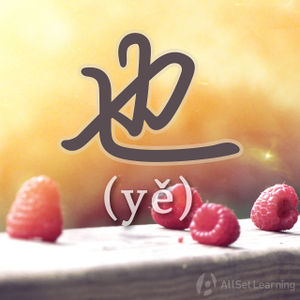Difference between revisions of "Expressing "even if…" with "jiusuan""
| Line 3: | Line 3: | ||
就算 (jiùsuàn) is an informal way of saying "even if," and is used to introduce a hypothetical statement. However, unlike [[Expressing "Even if…" with "jishi"|即使]] , [[Expressing "Even if…" with "napa"|哪怕]] and [[Expressing "Even if…" with "jiushi"|就是]], 就算 has more of a feeling that the speaker doesn't believe that the hypothetical statement is reasonable or has much chance of being realized. | 就算 (jiùsuàn) is an informal way of saying "even if," and is used to introduce a hypothetical statement. However, unlike [[Expressing "Even if…" with "jishi"|即使]] , [[Expressing "Even if…" with "napa"|哪怕]] and [[Expressing "Even if…" with "jiushi"|就是]], 就算 has more of a feeling that the speaker doesn't believe that the hypothetical statement is reasonable or has much chance of being realized. | ||
| − | ==Structure== | + | == Basic Pattern == |
| + | |||
| + | === Structure === | ||
<div class="jiegou"> | <div class="jiegou"> | ||
| Line 9: | Line 11: | ||
</div> | </div> | ||
| − | == Examples == | + | === Examples === |
<div class="liju"> | <div class="liju"> | ||
| − | *<em>就算</em>你 | + | *<em>就算</em> 你 不想 听 ,我 <strong>也</strong> 要 说 。<span class="trans">Even if you didn't want to listen, I still need to say it.</span> |
| − | *<em>就算</em> 你 说 的 都 是 真的,我们 < | + | *<em>就算</em> 你 说 的 都 是 真的,我们 <strong>也</strong> 没 办法 证明。<span class="trans">Even if what you say is true, we still don't have any way to prove it.</span> |
| − | *<em>就算</em> | + | *<em>就算</em> 你 通过 了 面试 ,<strong>也</strong> 不一定 能 被 录用 。<span class="trans">Even if you pass the interview, we can't say you are definitely going to be hired.</span> |
| + | |||
| + | </div> | ||
| + | |||
| + | == Advanced Pattern == | ||
| + | |||
| + | === Structure === | ||
| + | |||
| + | <div class="jiegou"> | ||
| + | 就算 + Subj. 1 + 再 ⋯⋯ ,Subj. 2 + 也 ⋯⋯ | ||
| + | </div> | ||
| + | |||
| + | === Examples === | ||
| + | |||
| + | *<em>就算</em> 你 给 我 再 多 钱 ,我 <strong>也</strong> 不能 干 违法 的 事情 。<span class="trans">I can't do illegal things no matter how much you pay me.</span> | ||
</div> | </div> | ||
Revision as of 09:08, 5 March 2018
-
Level
-
Similar to
-
Used for
-
Keywords
就算 (jiùsuàn) is an informal way of saying "even if," and is used to introduce a hypothetical statement. However, unlike 即使 , 哪怕 and 就是, 就算 has more of a feeling that the speaker doesn't believe that the hypothetical statement is reasonable or has much chance of being realized.
Contents
Basic Pattern
Structure
就算 ⋯⋯ ,也 ⋯⋯
Examples
- 就算 你 不想 听 ,我 也 要 说 。Even if you didn't want to listen, I still need to say it.
- 就算 你 说 的 都 是 真的,我们 也 没 办法 证明。Even if what you say is true, we still don't have any way to prove it.
- 就算 你 通过 了 面试 ,也 不一定 能 被 录用 。Even if you pass the interview, we can't say you are definitely going to be hired.
Advanced Pattern
Structure
就算 + Subj. 1 + 再 ⋯⋯ ,Subj. 2 + 也 ⋯⋯
Examples
- 就算 你 给 我 再 多 钱 ,我 也 不能 干 违法 的 事情 。I can't do illegal things no matter how much you pay me.
See also
- Expressing "even if…" with "jishi"
- Expressing "even if…" with "napa"
- Expressing "even if…" with "jiushi"
Sources and further reading



